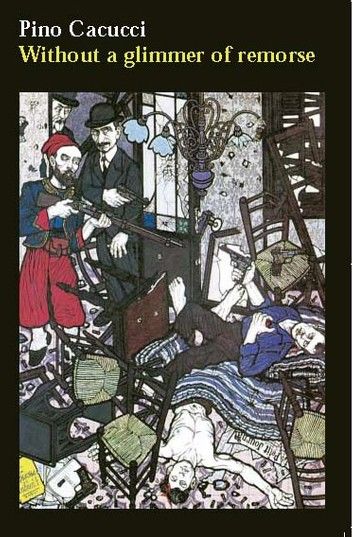圖書名稱:Without a glimmer of remorse...
When in 1910 Conan Doyle, creator of Sherlock Holmes, engaged Jules Bonnot as his chauffeur in London he could hardly have realized that here was a character every bit as colourful as one of his own inventions. Returning to France at the end of that year, Bonnot went to go on to become Paris's public enemy number one, an inspired bandit leader of a group of anarchists who struck terror into bourgeois pre-WWI France and triggered a ferocious anti-proletarian crackdown. Bonnot's gang consisted of a group of French anarchists associated with the magazine L'Anarchie. The founder of the group, Raymond Callemin (nicknamed Raymond la Science), regarded Mikhail Bakunin and Pierre-Joseph Proudhon as his role models. Bonnot joined them in December 1911, and that month their first robbery took place at the Société Générale Bank in Paris, netting them booty equal to 5126 Francs, with more in securities. They have the dubious honour of being the first to use an automobile to flee the scene of a crime – the getaway car was a stolen Delaunay-Belleville — presaging by over twenty years the methods of John Dillinger and Bonnie and Clyde. The French central police were determined to catch the gang; using the registry of anarchist organizations they managed to arrest one man as well as many of the gang’s supporters. In March 1912, gang member Octave Garnier sent a mocking letter to the Sûreté Nationale – with his fingerprints. The French police did not yet use fingerprinting. Sûreté chief Xavier Guichard took the matter personally. Politicians became concerned, increasing police funding by 800,000 francs. Banks began to prepare for forthcoming robberies and many cashiers armed themselves. The Société Générale promised a reward of 100,000 francs for information leading to arrests. On April 28, police tracked Bonnot to a house in a Paris suburb. They besieged the place with 500 armed policemen, soldiers, firemen, military engineers and private gun-owners. By noon, after sporadic shooting from both sides, Paris police chief Lépine sent three policemen to put a dynamite charge under the house. The explosion demolished the front of the building. Bonnot, hiding in a mattress, returned fire until Lépine shot him in the head. Two weeks later 300 policemen and gendarmes and 800 soldiers began another siege in another Paris suburb. The firing from both sides was intense, and an explosion again decided things in favour of the Sûreté chief, when the remnants of Bonnot’s gang of robbers were blown up once and for all.
Pino Cacucci offers us an affectionate, fast-paced but accurate account of the life of the extraordinary Jules Bonnot — car enthusiast, chauffeur, worker, soldier, bank robber — a man with a long-cherished dream of absolute freedom; an anarchist who felt it his duty to challenge bourgeois society, staking his all. A tragically romantic hero, Jules Bonnot emerges from these pages as a wounded dreamer who was to deeply affect the lives of so many other unforgettable characters.











